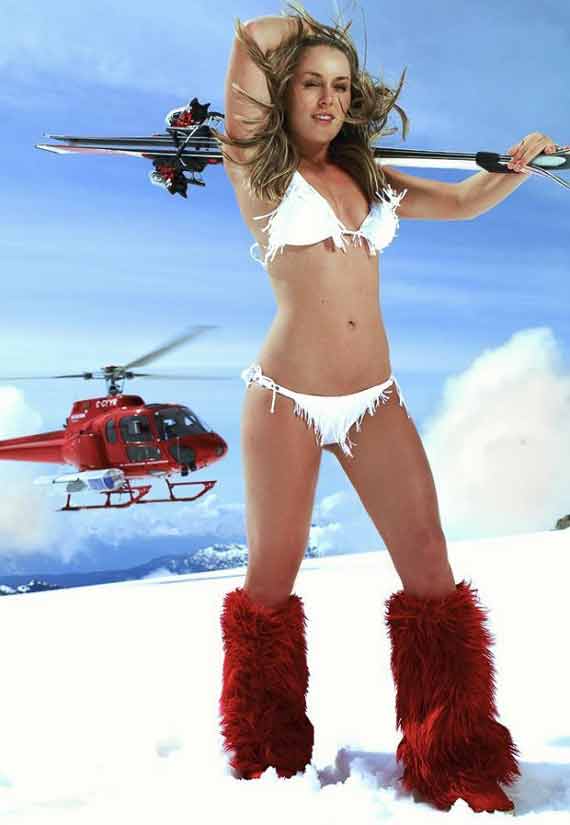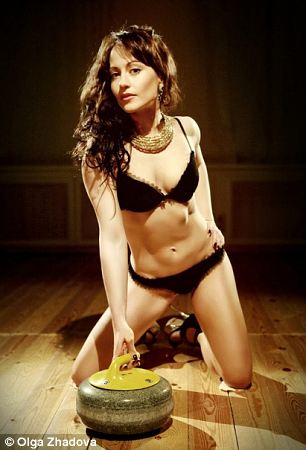Winter Olympics and Sports Sexism Worldwide
“Medals Aren’t Enough: Female Athletes Still have to Sell Sexiness.”
With the 2014 Winter Olympics having just closed, people have become excited about the plethora of new events, including snowboard and ski “slopestyle”- an exciting display of downhill snowboarding tricks. However, it has become evident that not much has changed in the realm of Olympic gender bias. According to several studies and activists who work to end gender bias, the 2014 Winter Olympics is still about as sexist as any previous Olympics.
Skier Lindsey Vonn also poses for a photoshoot.
The Time Sports article entitled “Medals Aren’t Enough: Female Athletes Still have to Sell Sexiness” discusses the way female Olympians have to make people see them as sexy in order to get sponsorships. Male athletes, on the other hand, tend to be judged based only on their performance. What could be the cause for this predicament that female athletes find themselves in?
First of all, the article mentions that female events in the Winter Olympics get only a fraction of the airtime while men predominate the television. This means that female athletes have to maximize the impact they make on sponsors while they are on the air, and this means they often have to worry about beauty. This, in turn, means that Olympic athletes who compete with helmets on still spend up to 30 minutes in front of the mirror before competing. That way they will look good for their quick close up after they compete. (Dockterman)
Their reasons for needing to look beautiful are completely monetary. Female and male Olympians alike often need to secure sponsorships to fund their training. Since the Winter Olympics only take place every four years, Olympic athletes have just a few weeks to perform well in order to secure funding for their training for the next four years. This is the reason many female Olympians decide to use their image to secure sponsorships. The unfortunate truth is that this works well.
Though female Olympians need to sell their images to secure sponsorships, the Time Sports article goes on to claim that things are getting better, and many female athletes now refuse to play the sexist media game.
In college, women tend to not use their body images. Legislation has made it possible for college female athletes to compete without worrying about looks. Title IX, passed in the United States in 1972, gave American women’s sports equal funding at the collegiate level. Before Title IX passed, women were only 2% of the collegiate athletes, but now they are 42% of collegiate athletes.
However, women’s teams still account for just 37% of athletic program operating expenses. Sure, colleges get equal funding for female sports, but they do not spend the same on female sports as they do on male sports. So, has Title IX made male and female sports truly equal at the collegiate level? Not yet.
At least American women seem to be much better off then Russian women. After doing a little research on the status of female athletes in Russia, I was met with a wall of increasingly revealing pictures of Russia’s lady athletes. This grew frustrating, so instead I decided to do some research on the status of women in Russia. These results were equally useless. The only links that showed up on Google were advertisements for Russian brides.
I had hoped to provide you with a comparison of the status of female athletes in the country hosting the Winter Olympics versus the status of American female athletes. Sadly, all I have for you are scandalous pictures of Russia’s female world- class athletes.
Ekaterina Galkina, 25, from the Russian Curling team helped kick off the games by posing with one of her curling stones and not much else.
Go and see for yourself. Search for information about Russia’s female athletes and feel free to search general information about women in Russia. Many of my male readers will not find these results disappointing in the least. However, most people who accept my challenge will feel at least a little disturbed by the results of their research. Shouldn’t it be easier to find general information about what has been done for women in Russia?
The Russian government, or at least the Russian Olympic Team, commissioned at least most of these pictures. The truth could be that women in Russia do not enjoy the same rights as American women. It is also possible that many Russian women could be trying to become “mail- order” brides for American husbands because they just want to leave Russia. This is all speculation. It would be better for you to do your own research and develop your own opinions.
Let’s return to the United States. According to a study conducted by Susan Tyler Eastman and Andrew C. Billings, there is embedded favoritism on television toward men’s sports and male athletes. This study compared ESPN, CNN sports, The New York Times and USA Today.
Eastman and Billings showed that there is a higher degree of favoritism toward male sports on ESPN’s Sportscenter than on CNN’s Sports Tonight. They hypothesized that this could be due to the somewhat different audiences they target. Likewise, the gender bias in the New York Times far exceeded the gender bias in USA Today.
So, the American media is still highly biased toward men’s sports, though some channels and newspapers are more biased than others.
This is not truly surprising if we think about the sports we see on TV. Male sports dominate the air, which is likely because they carry a far larger fan base than most female sports.
Even more shocking than the media’s sexism is the fact that even referees tend to have a strong gender bias. A study published by researchers Nicolas Souchon, Andrew Livingstone, and Gregory Maio in December 2013 showed that even referees showed gender bias when they made their calls.. In their study, entitled “The Influence of Referees’ Expertise, Gender, Motivation, and Time Constraints on Decisional Bias Against Women,” Souchon and company conducted the following study:
In the experiment, they tested 145 male handball referees. Souchon studied how the referees’ level of expertise influenced their decisional bias against women and their gender stereotypes. Their conclusion was:
“Results revealed that biases against women were powerful regardless of the referees’ level of expertise and that male referees’ stereotype toward female players tends to be negative.” (Souchon)
References
Women Demand: End Gender Bias at Olympics
Sportscasting and Sports Reporting the Power of Gender Bias.
Medals Aren’t Enough: Female Olympians Still Have to Sell Sexiness.









